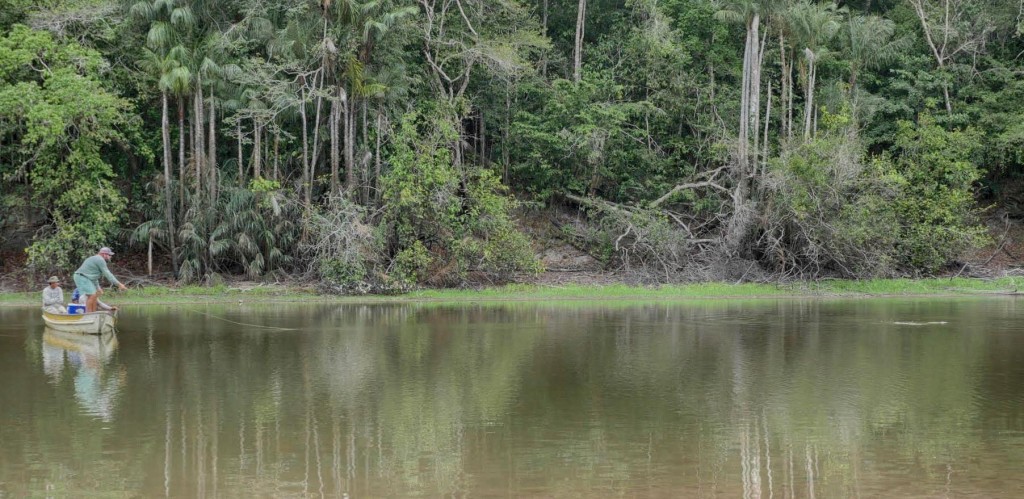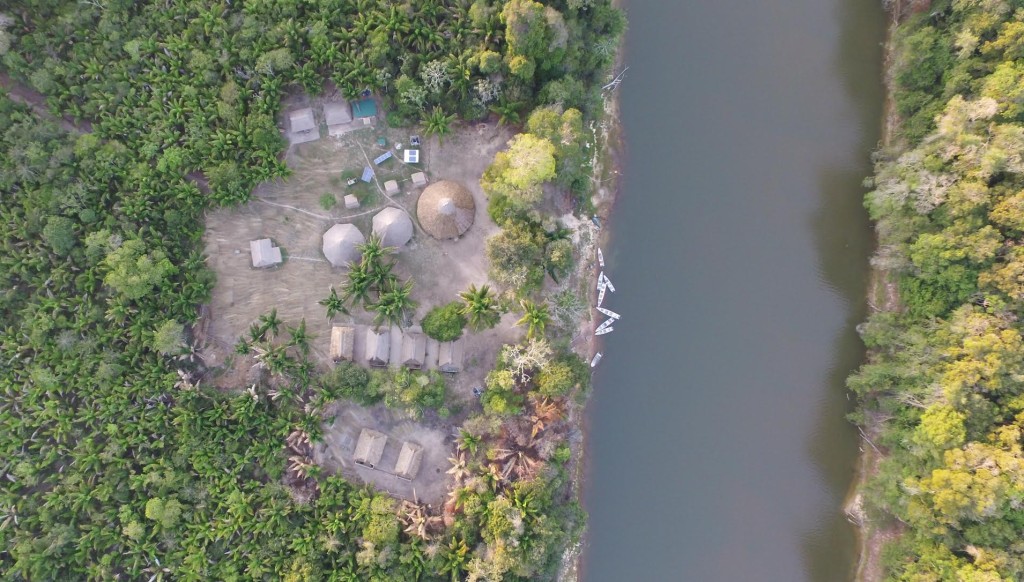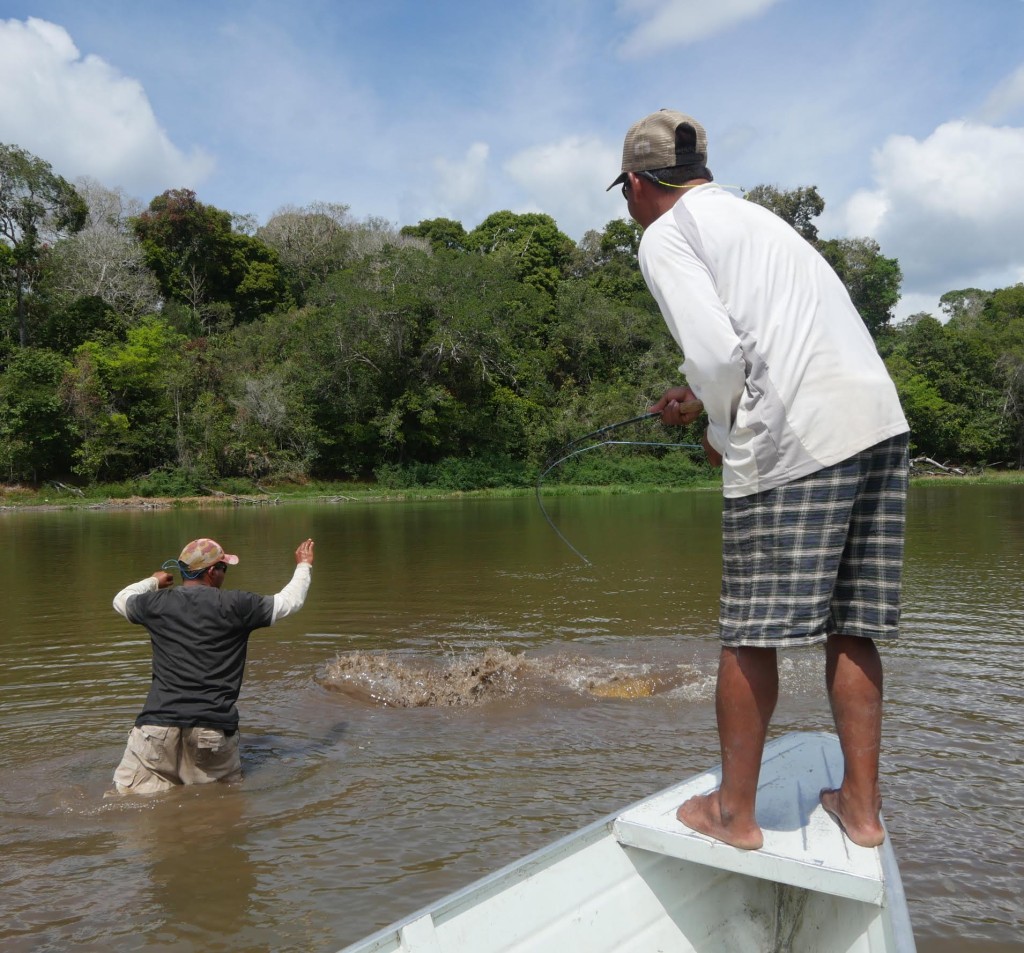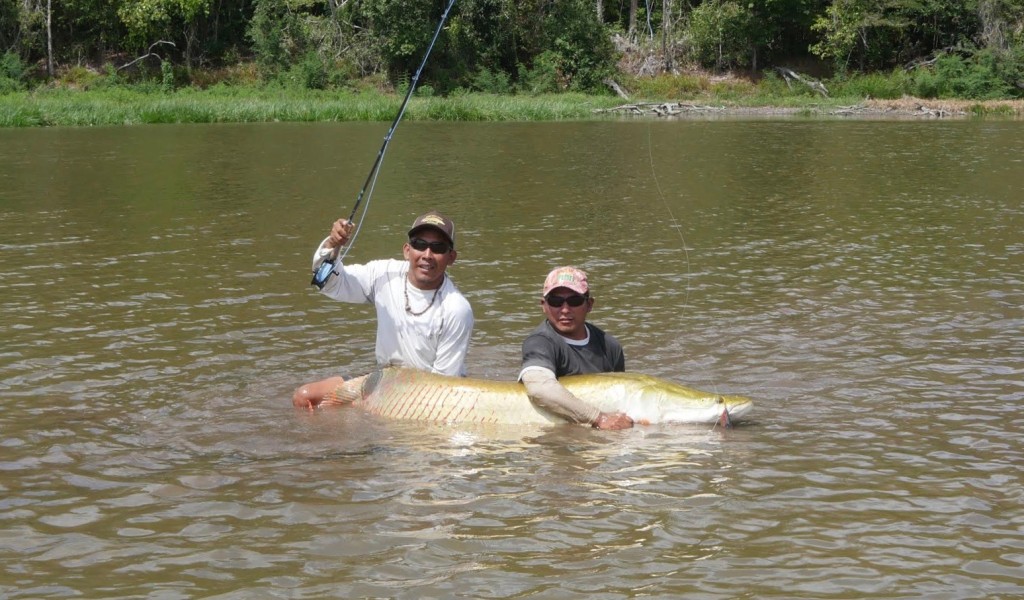Words and Photos by Dr. Andy Danylchuk
Rain leaked through the windows of the Islander as we began corkscrewing down through the clouds. It was nerve-racking to watch the flight team stretching to look out the port window, fingers pointing and heads shaking. As we dropped down, the grass runway came in view, as did a small thatched shelter sparsely populated with colorfully dressed kids and a few older folks, one of which was wearing and Indifly Foundation shirt. Yup, this was the right place.
After unloading our duffle bags, sacks of okra, limes, and other ‘greens’ from the plane, we began the hour-long boat trip up the Essequibo River – the path to our base camp for the upcoming week.
As we approach the landing, tarps that covered the living areas clashed against the backdrop of the neo-tropical rainforest, yet it soon became apparent that the detailed infrastructure of camp was essential for allowing us to stay focused on our goals. My hammock was already perfectly set up under a bug net that surely would keep me pest free, at least while I slept.
The purpose of this trip was to advance the next phase of research on arapaima (Arapaima arapaima)– an almost prehistoric looking eating machine that makes you question if you really tied a solid arbor knot and whether you’re ready to strip set like you’ve never strip set before. This fish species at the center of Indifly’s first project based in Rewa.
Indifly’s mission is to facilitate the development of community-owed flyfishing based ecotourism operations that promote sustainable livelihoods for indigenous peoples, while simultaneously ensuring the conservation of natural resources. Essentially, we believe that the gentle footprint of fly fishing can be used as an income generator as well as a reason for indigenous communities to say ‘no’ to the allure of foreign developers who have a track record for promising a fast buck in exchange for sterilizing the landscape and squashing local culture.
Developing guidelines for the catch-and-release of the fish species and understanding of the essential habitats needed to support healthy fish populations are a critical part of this research. Like many fish species in remote locations and emerging economies, there is little known about of how arapaima respond to catch and release. There is growing evidence that strongly suggests this species-by-species best-practices approach is essential to the sustainability of emerging fisheries: this is especially true for a species like arapaima that has a mind-boggling biology and lives in a very dynamic ecosystem.
On our first full day we took a short boat ride further up the Essequibo River, and then hiked through the forest to a small slough that connects to the main river during the rainy season. This was the first chance to see and hear arapaima rolling at the surface. Arapaima is an obligate air breather, meaning that it has to gulp air in order to meet its body’s metabolic demands for oxygen. This is how anglers know where to huck their streamer flies, but also something that needs to be considered when thinking through handling practices after a fish fights at the end of a fly line. After witnessing one of these beasts being caught on a 12 wt, I was totally blown away by how much care and respect was being paid to the fish by the Rewa fly fishing guides. Nevertheless, taking a scientific approach to developing best practices for catch-and-release is definitely needed. As a step towards this, our team successfully beta-tested a neat little device that measures how differences in fight time and handling influences the activity, movement patterns, and survival of released arapaima.
Fly fishing based ecotourism for arapaima can provide sustainable economic growth for indigenous communities, but also act as a catalyst to ensure the sustainable use of the greater landscape. We were fortunate to spend the entire trip with the Toshau (village leader) for Apoteri, who was getting serious about setting up a fly-fishing based ecotourism lodge in his region. When reflecting on forestry concessions surrounding his village’s land, the Toshau commented that “these forests are our supermarket, our pharmacy, and the lungs of our planet, and we cannot let greed and mismanagement of our natural resources impact what we leave for our children”. His words left us inspired and hopeful that Indifly can continue to humbly serve communities in Guyana and elsewhere as they strive to grow economically without sacrificing their culture and natural capital.
Dr. Andy Danylchuk is a Board Member for the Indifly Foundation, Professor of Fish Conservation at the University of Massachusetts Amherst, National Fellow of The Explorers Club, Research Fellow for Bonefish & Tarpon Trust, and Patagonia Fly Fishing Ambassador.









